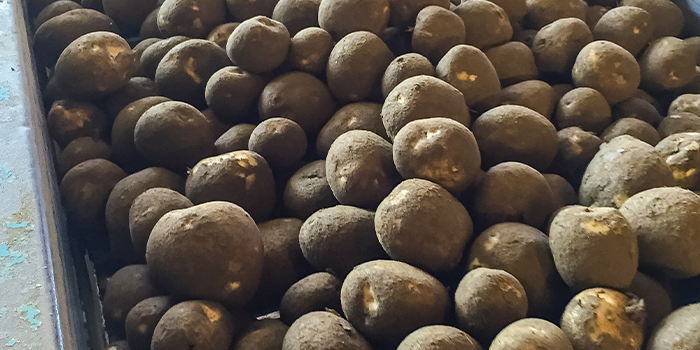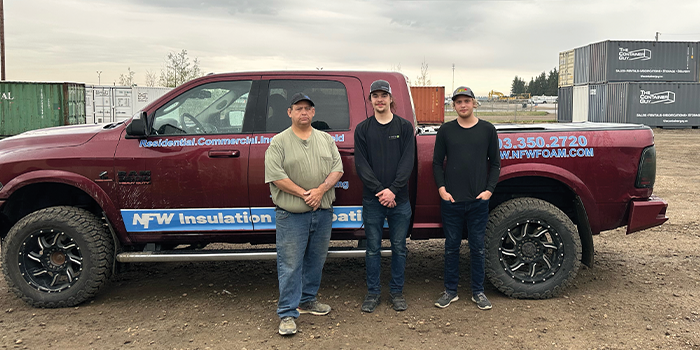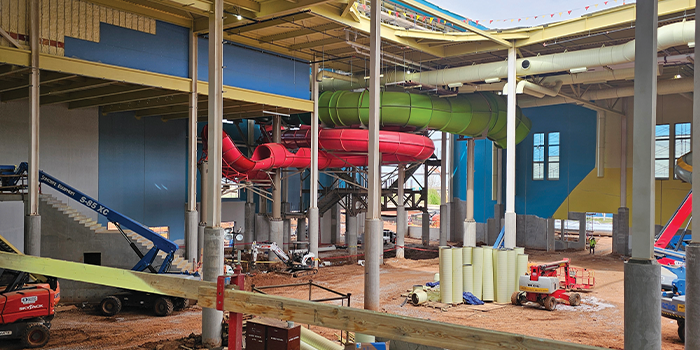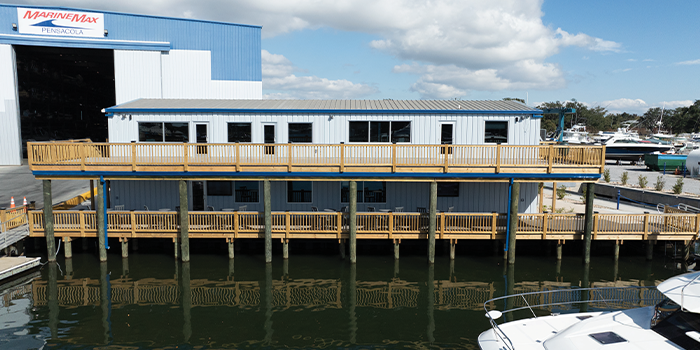Digging It
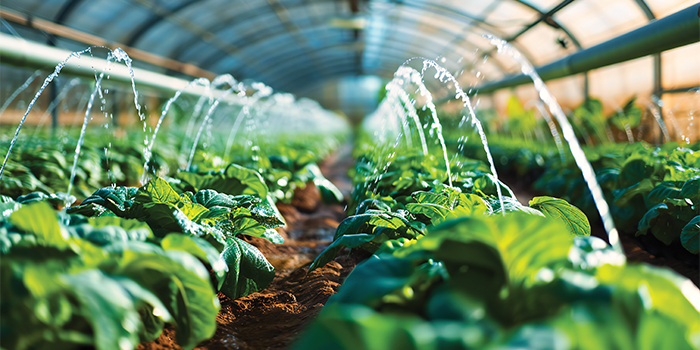

SPRAY FOAM MAGAZINE – Growing a lush grove of fruit trees takes skill and patience, even for orchardists living intemperate climates – growing a grove in a residential backyard in Northern Idaho requires another level of dedication. A homeowner in Moscow, Idaho dreamt of creating their own oasis of greenery that could last through the bleakest winter months, so they built a 50-yard-long geothermal greenhouse on their property.
Unfortunately for the homeowner, the greenhouse’s initial iteration failed one of nature’s first tests when the wind blew over their hard work due to structural instability on one of the walls. One side of the greenhouse was significantly heavier than the other, and the entire structure needed to be reinforced before it would be ready to brave the winter, much less grow bushels of home-grown produce.
Although a geothermal greenhouse is ultimately designed to self-insulate, the homeowners reached out to Palouse Foam Insulators to see if closed-cell spray foam could help shore up the building’s weaker side. Local to Moscow, Idaho, the Palouse team consists of owner/operator Micah Shryer, sales estimator Joshua Dockter, marketing lead Ben Newell, and lead sprayer Eric Myers, all of whom were eager to show this client what their products and services could do beyond insulation.
“On top of helping insulate, the foam added stability and extra weight to the sheet metal side, making the entire thing much more rigid.” Myers explained.Newell added, “It was great timing, too. We’d already been doing a lot of agricultural jobs, so we had plenty of Natural Polymers agricultural foam ready to go.”

Black pipes for the geothermal system are visible, alongside polycarbonate and sheet metal walls.
Geothermal greenhouses like the one built by Palouse’s client are a tried-and-true method for horticulturists living in extremely cold climates, from Alaska to Iceland. On the surface, its structure is simple. Slanted walls slope together into a roof peak, with one side made of translucent polycarbonate, and the other side made of sheet metal. Its flooris nothing more than a pit dug into the earth, which gives the building itself a low-profile; from the outside, it’s only about five and a half feet tall. Inside, it’s roomy enough for fruit trees to thrive in and humans to work in without hunching over. The geothermal magic, or rather, science, happens beneath the surface. Even in cold weather, the subterranean temperature stays around 50 degrees Fahrenheit. Conduit piping is installed about eight feet below ground, where it runs the length of the structure’s dirt floor to constantly cycle air throughout the greenhouse. The geothermal conduit system keeps the greenhouse between 50- and 60-degrees Fahrenheit – warm enough to keep many plants alive without any extra energy modifications. Adding a layer of spray foam insulation to just one wall promised to keep the greenhouse’s interior temperatures feeling more like Florida, and less like Idaho.
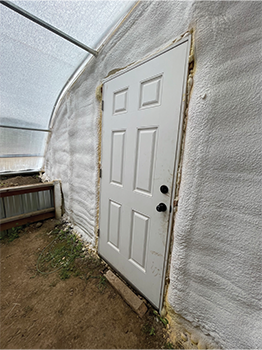
The Palouse team added spray foam on the metal wall and on the wall around the door. They avoided adding foam to the polycarbonate wall/roof.
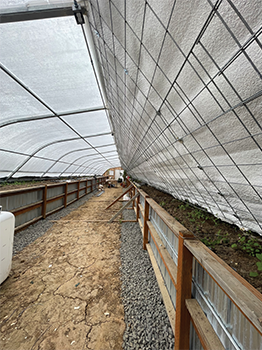
The metal wall was fortified with spray foam due to initial collapse from the heavy polycarbonate; After foaming, the client installed planters and hung trellis along the newly fortified wall.
On a cold week in late-October just before one of the first snowfalls of the season, Myers and Newell set out to the client’s home in the hills to get started on the greenhouse. Already, they were facing challenging conditions. The temperature had already dropped down to the 20s, and it was humid to boot. They were armed with a kerosene jet heater to warm up the sheet metal substrate and cut down on condensation to help the foam adhere. “It had to be kerosene. Any other heater would have added to the condensation issues tenfold.” Newell explained.
After setting up the heater, the next order of business was site preparation.While Myers set up the equipment and readied the foam, Newell began taping cardboard baffle to the greenhouse’s polycarbonate side and draping plastic over the empty planter boxes. It was critical not to get overspray on the polycarbonate part of the roof and wall, because it acts as both an air gap for thermal resistance and as a translucent window to let in natural sunlight for the greenhouse’s future plants.
The Palouse team used a type of foam rated specifically for agricultural jobs called Natural-Therm 1.8 Ag by NaturalPolymers. Even so, they were careful not to get any excess foam on the ground or on planter boxes. To apply the foam, Myers used a Graco Reactor and Fusion ProConnect spray gun. Asan air-powered machine, this worked best due to the power constraints on the site which would have made it difficult to run a standard electrical machine. It took all 200 feet of spray hose to reach the greenhouse from their truck parked in the client’s driveway.
While spraying, Myers wore protective gear including Tyvek coveralls, gloves, and an inverted 3M respirator mask. The two worked in a leapfrog pattern, with Myers spraying one section while Newell quickly moved the protective cardboard from one area to the next. The foam needed to reach a total thickness of four inches, so Myers applied it in two separate passes at two inches each.“It’s great foam for adhering in extreme temperatures, even if it needs more than one pass to get the full rise,” said Myers. In fact, they could feel the foam working right along with them. “We actually turned off the heater halfway through spraying because after a certain point, it wasn’t necessary anymore.”Newell recalled.
In total, they finished the job in four days, including prep and cleanup time.Their client was beyond pleased with the result and wasted no time installing more planters and hanging garden trellis down the full length of the fortified foam wall in anticipation for their new backyard jungle. With snow and wind sealed out of the greenhouse for good, the only left to do was till the fresh soil and start the first seeds.
For use by SprayFoamMagazine.com & Spray Foam Magazine
Disqus website name not provided.





